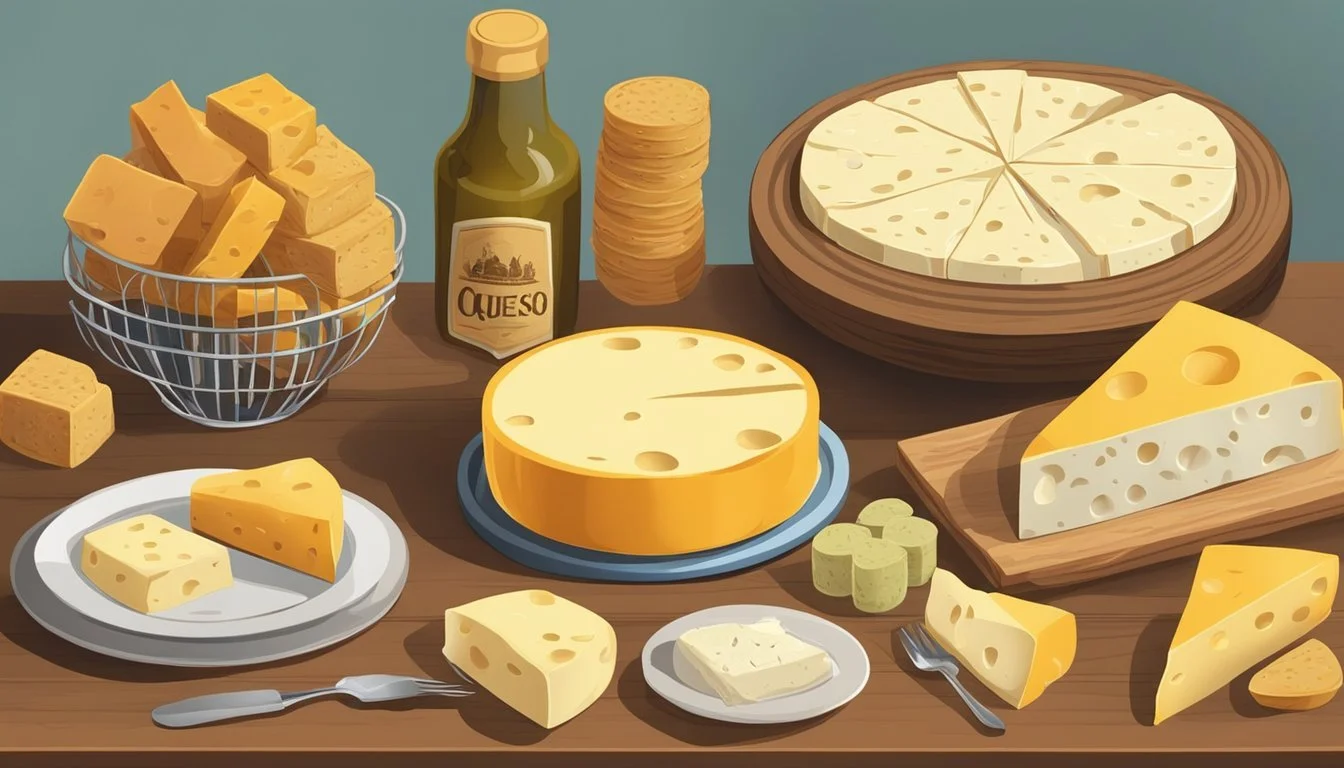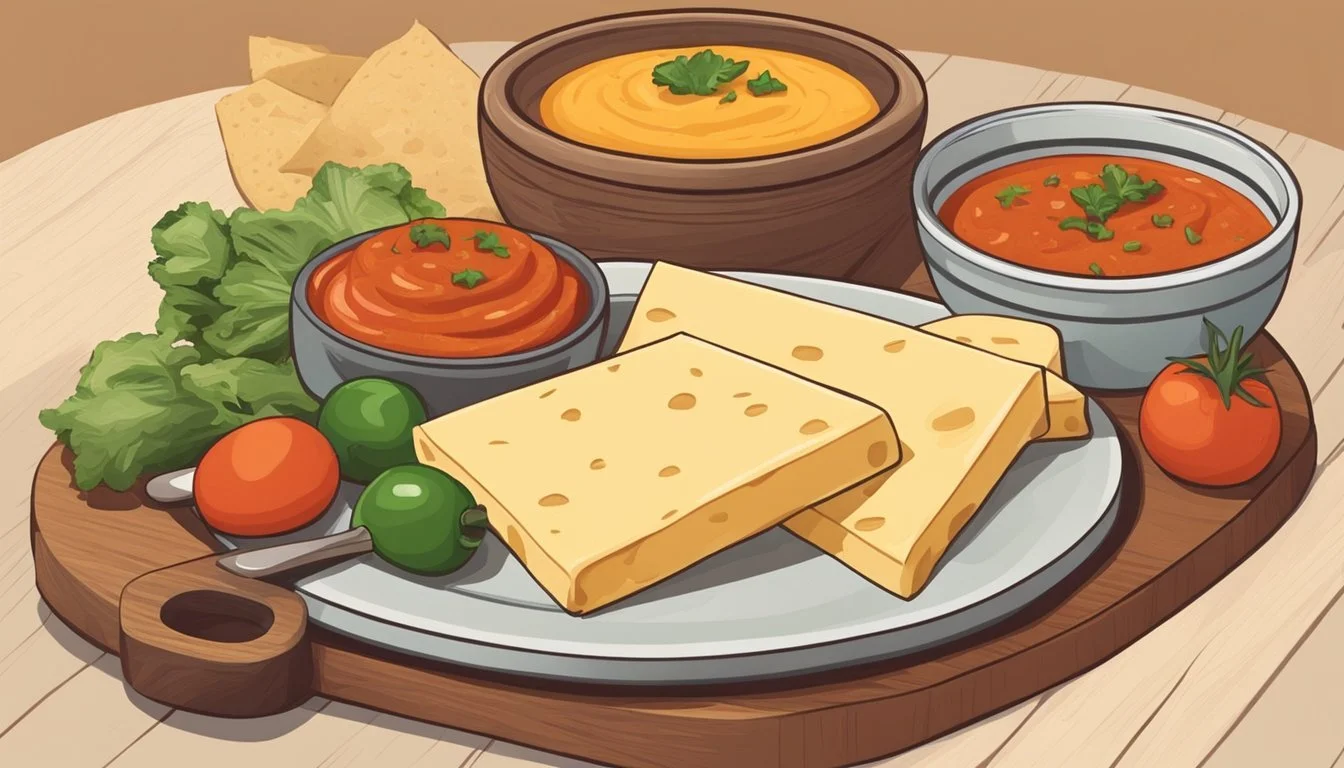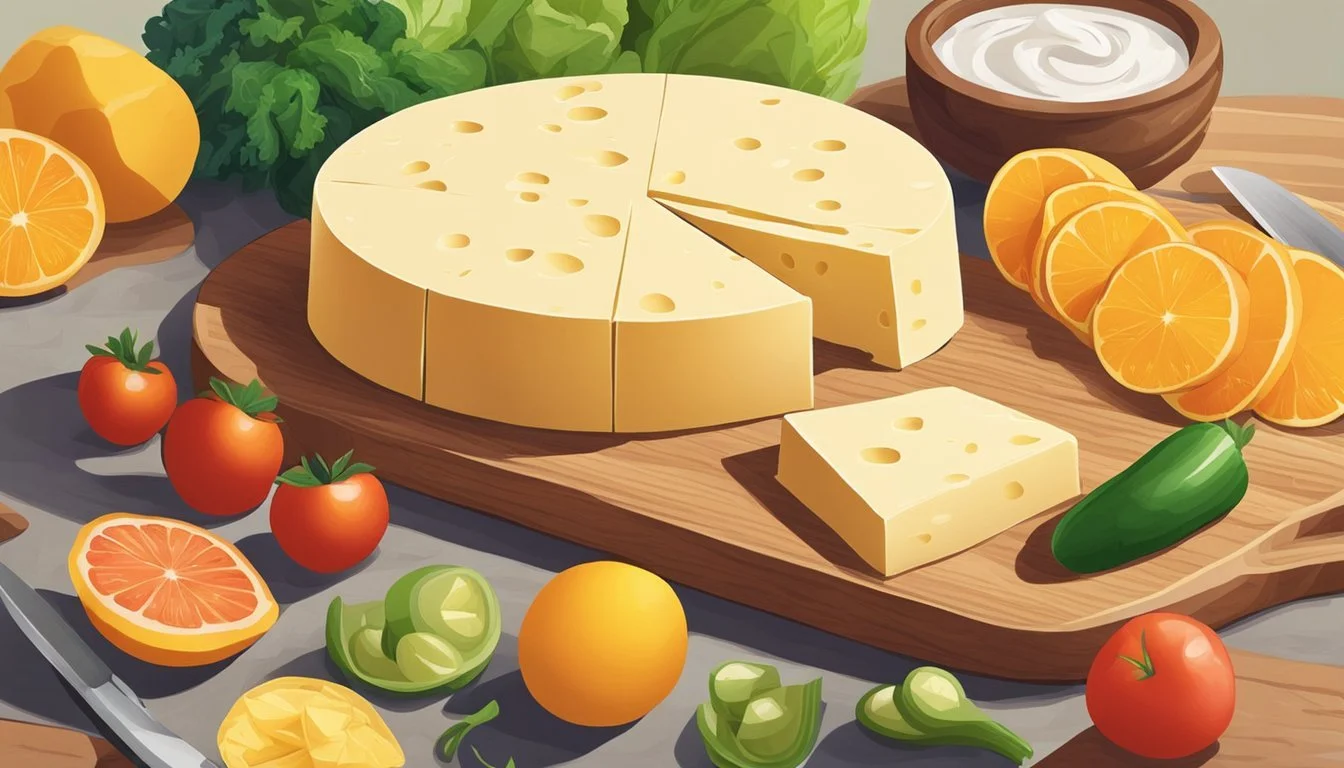Does Queso Panela Go Bad?
Understanding Shelf Life and Storage
Queso Panela, a staple in Mexican cuisine, is a fresh cheese known for its mild flavor and slightly crumbly texture. This cheese, often used in dishes such as quesadillas and salads, can soften nicely when baked, making it a versatile ingredient in various culinary creations. The question many home cooks grapple with is, does Queso Panela go bad?
Like all cheeses, Queso Panela does have a shelf life and can indeed go bad. When determining if it's still fresh, you should check for signs such as an off smell or a sour, ammonia-like odor. If the cheese emits any of these scents, it's time to toss it. Another way to check its freshness is by tasting a small piece, though this can sometimes be unpleasant if the cheese has already spoiled.
To extend the life of your Queso Panela, store it properly in the refrigerator. Keep it in its original packaging or wrap it tightly in plastic wrap to prevent exposure to air and moisture. Proper storage can help maintain its freshness and extend its usability in your favorite dishes.
Understanding Queso Panela
Queso Panela is a fresh and mild Mexican cheese made from pasteurized cow’s milk. Known for its firm texture and versatility in various dishes, this cheese is low in calories and rich in protein, calcium, and vitamin A.
Origins and Production
Queso Panela has roots in traditional Mexican cheesemaking. It is made primarily from pasteurized cow’s milk. The production process involves heating the milk, adding rennet to curdle it, and then pressing the curds into molds. This results in a fresh, smooth cheese that holds its shape well. While traditionally produced in Mexico, Panela cheese can now be found in various regions due to its growing popularity.
Characteristics and Nutrition
Panela cheese is white, with a soft and creamy texture that becomes firmer over time. It does not melt when heated; instead, it softens and retains its shape. With its mild flavor, Queso Panela is a versatile cheese that complements many dishes. Nutritionally, it provides a good source of protein, calcium, and vitamin A. Additionally, it is relatively low in calories, making it a healthy choice for many.
Culinary Uses
In Mexican cuisine, Queso Panela is commonly used in tacos, quesadillas, and enchiladas. It can be sliced and added to fresh salads. This cheese works well as an appetizer when grilled, baked in the oven, or lightly fried. Its firm texture ensures it can be cooked without melting, making it ideal for dishes requiring cheese that holds its form. Panela's versatility and mild flavor make it a popular choice in both traditional and modern recipes.
How to Identify Spoilage
Identifying spoilage in queso panela involves examining physical signs, changes in smell and taste, and considering health factors. Spotting these indicators helps ensure food safety and prevents consumption of bad cheese.
Physical Signs
Check for discoloration and texture changes. Queso panela that has gone bad may show spots of mold in green, white, or blue hues. The texture often shifts from a firm, crumbly consistency to a slimy or excessively soft one. Mold growth is a clear indication that the cheese should be discarded immediately to avoid foodborne illnesses.
Change in Smell and Taste
Spoiled queso panela emits a sour or rancid odor. Fresh cheese has a mild, tangy scent, but as it spoils, the smell turns pungent and off-putting. Taste is also affected; while fresh queso panela is savory, bad cheese may taste bitter, sour, or musty. Any drastic changes in flavor mean the cheese should not be consumed.
Health Considerations
Consuming spoiled queso panela poses health risks, including food poisoning. Always check the cheese's expiration date and store it properly in the refrigerator. Ensure the packaging is intact before use. If any signs of spoilage are observed, it is safest to discard the cheese. Proper handling minimizes the risk of contamination and maintains dairy product safety.
Proper Storage and Handling
To keep queso panela fresh and prevent spoilage, it is essential to store it correctly based on the environmental conditions and intended shelf life. The methods vary for room temperature, refrigeration, and freezing.
At Room Temperature
Queso panela should not be stored at room temperature for extended periods. When exposed to the air, it becomes susceptible to contamination and spoilage. If left unrefrigerated for too long, it can develop an unpleasant smell and taste. In addition, without proper cooling, it's prone to mold growth. Thus, queso panela should be left out at room temperature for no more than 2 hours.
Refrigeration Practices
Refrigeration is the best method to extend the shelf life of queso panela. Store the cheese in an airtight container to maintain freshness and prevent mold. In the refrigerator, queso panela can typically last up to 2 weeks. Proper handling involves ensuring that the cheese is dry before storing to avoid excess moisture, which can lead to spoilage. Avoid keeping it near foods with strong odors to preserve its mild flavor.
Freezing Queso Panela
Freezing can significantly extend the shelf life of queso panela, but it does have its drawbacks. Texture changes are common when the cheese thaws, often becoming crumbly, which may not be suitable for all dishes. To freeze, wrap the cheese tightly in plastic wrap and place it in a freezer-safe airtight container. It can be stored this way for several months, but for the best quality, it's recommended to consume within 3 months. Defrost slowly in the refrigerator to minimize texture damage.
Comparing Queso Panela with Other Cheeses
Queso Panela, a versatile Mexican cheese, is known for its mild flavor and soft texture. This section explores how it compares to other cheeses, considering aspects such as texture, flavor, and usage in recipes.
Similarities and Differences
Queso Panela and Queso Fresco both originate from Mexico and are typically used in similar dishes. Panela is made from low-fat milk, making it softer and more rubbery, while Queso Fresco uses full-fat milk, resulting in a crumblier texture.
Cotija and Feta are known for their strong, salty flavors, sharply contrasting with the mild taste of Queso Panela. Halloumi and Queso Panela share a similar resilience to melting, but Halloumi is saltier and more suitable for grilling.
Paneer and Queso Panela have similar textures and usages. Paneer is commonly used in Indian cuisine, whereas Queso Panela is a staple in Mexican dishes such as enchiladas and quesadillas.
Ricotta is creamy and slightly sweet, differing from Panela’s slightly salty taste. Monterey Jack and Queso Blanco are also mild and versatile, like Queso Panela, but Monterey Jack melts better, making it ideal for dishes requiring a creamy texture.
Substitutes for Queso Panela
When substituting Queso Panela, Queso Fresco is a suitable option due to its similar usage in Mexican cuisine. For a firmer alternative, Paneer can be used, especially in grilled dishes.
Halloumi serves as a good substitute for grilled recipes thanks to its high melting point and similar preparation methods.
If a mild flavor is essential, Monterey Jack or Queso Blanco can be effective replacements. While they differ slightly in texture, they adapt well to various recipes needing a soft, blendable cheese.
Ricotta can be used in softer, creamier dishes, offering a different texture but maintaining a mild flavor profile. Cotija and Feta should generally be avoided as substitutes due to their stronger, saltier flavors.
Incorporating Queso Panela into Diet
Queso Panela can be a great addition to a variety of dishes, providing a low-fat, high-protein option. Whether in salads, grilled, or baked, its versatility and nutritional value make it ideal for many culinary creations.
Healthy Recipes
Grilled Vegetable Salad with Queso Panela
Grill an assortment of vegetables such as zucchini, bell peppers, and corn. Slice the Queso Panela and add it to the mix. Dress with olive oil, lemon juice, salt, and pepper for a refreshing and healthy meal.
Baked Queso Panela with Herbs
Slice Queso Panela and place it in a baking dish. Sprinkle with dried herbs like oregano and thyme. Bake until slightly golden and serve with a side of fresh salad greens for a protein-packed meal.
Snacking and Quick Meal Ideas
Queso Panela and Fruit Platter
Combine slices of Queso Panela with fresh fruits like apples, grapes, and strawberries. This makes for a tasty and nutritious snack perfect for any time of the day.
Quick Grilled Queso Panela Sandwich
Place slices of Queso Panela between whole grain bread. Grill until the cheese is melted and the bread is crispy. Add some greens and tomato slices for an added crunch and nutrients.
These suggestions highlight how Queso Panela can be easily incorporated into meals, whether you're preparing a full dish or looking for a quick snack.
Expert Tips for Enjoying Queso Panela
Discover how to bring out the unique flavors of queso panela and pair it with other ingredients to elevate your culinary creations. Following these expert tips will ensure a delightful dining experience.
Enhancing Flavors
To heighten the taste of queso panela, consider using fresh herbs and spices. Popular choices include cilantro, oregano, and chili flakes, which can be sprinkled over the cheese to add vibrancy and depth.
For a zesty twist, drizzle some lemon juice over the queso panela. This brightens its mild flavor and adds a refreshing tang. For a rich and creamy texture, mix in a bit of Mexican crema.
Grating queso panela is also effective. Use it as a topping for soups, salads, or grilled vegetables. The cheese melts smoothly, marrying well with other ingredients without overpowering them.
Best Pairings
Queso panela pairs well with various Mexican dishes. It can be added to tortillas, making it an excellent filling for tacos or quesadillas. For a side dish, consider combining it with black beans and peppers to create a flavorful and nutritious salad.
A vibrant salsa made from tomatoes, onions, and jalapenos complements the mild taste of queso panela. The cheese's texture also blends well with grilled corn, creating a tasty street food-inspired snack.
Pairing queso panela with savory meats like grilled chicken or beef allows the cheese to act as a subtle counterpoint, enhancing the overall dish. Matching it with a light and crisp white wine or a refreshing beer can further elevate the dining experience.
Frequently Asked Questions
How long does Queso Panela last?
Queso Panela can last for several weeks if stored properly. Keep it in its original packaging or wrap it in wax paper and store it in the refrigerator.
Can Queso Panela go bad?
Yes, Queso Panela can go bad. Look for signs such as unusual odor, discoloration, or mold. If any of these signs appear, it is best to discard the cheese.
What is the best way to store Queso Panela?
Store Queso Panela in the refrigerator, wrapped in wax paper or in its original packaging. This will help maintain its freshness and flavor.
Can you freeze Queso Panela?
Freezing Queso Panela is not recommended as it can alter the texture and flavor. It is best to consume it fresh.
What are some signs that Queso Panela has gone bad?
Common signs that Queso Panela has gone bad include a sour or off smell, visible mold, or a slimy texture. If any of these are present, the cheese should be thrown away.
How should Queso Panela be used before it goes bad?
Queso Panela can be used in various dishes such as salads, quesadillas, enchiladas, or simply enjoyed by itself. Consume it before the expiration date for the best taste.
Do other factors affect the shelf life of Queso Panela?
Temperature and exposure to air can affect the shelf life of Queso Panela. Always store it at the appropriate temperature and keep it well-covered to avoid spoilage.








